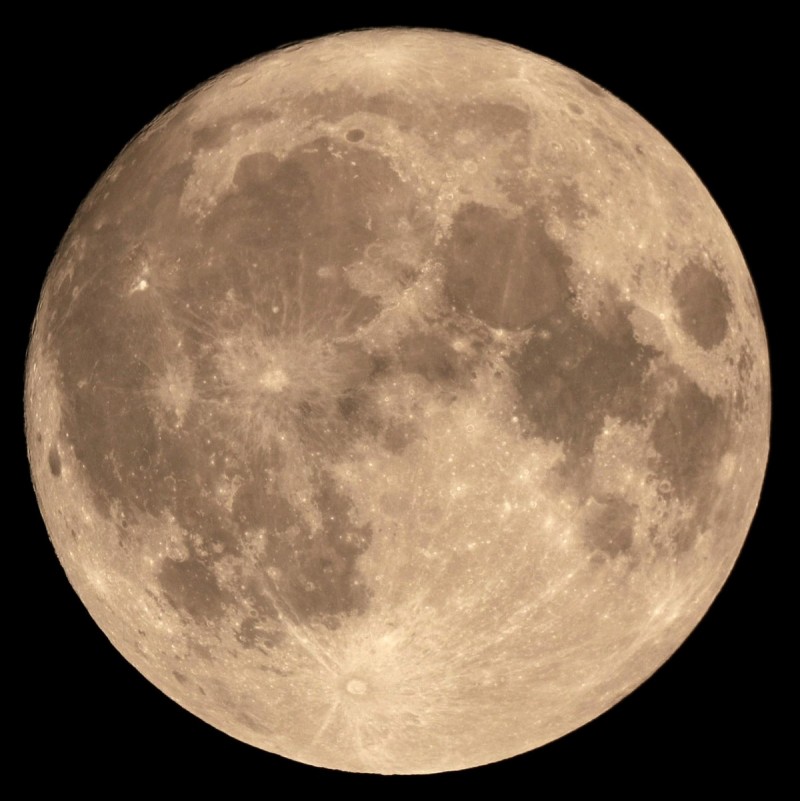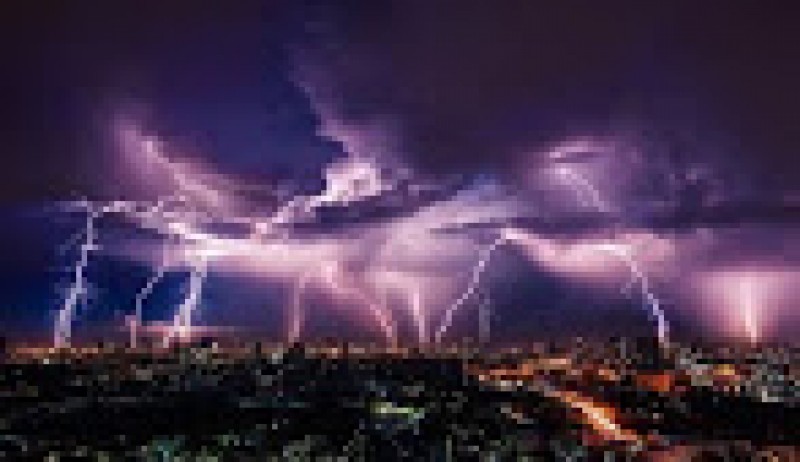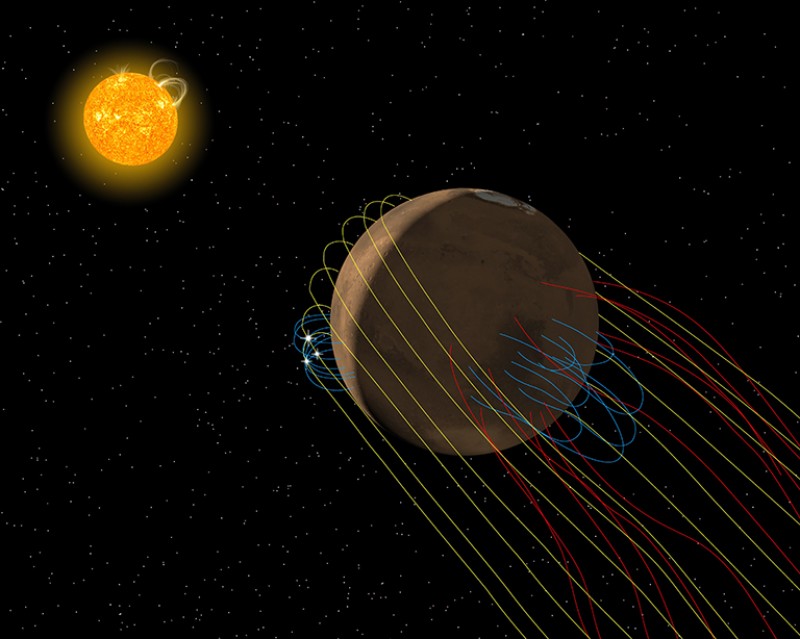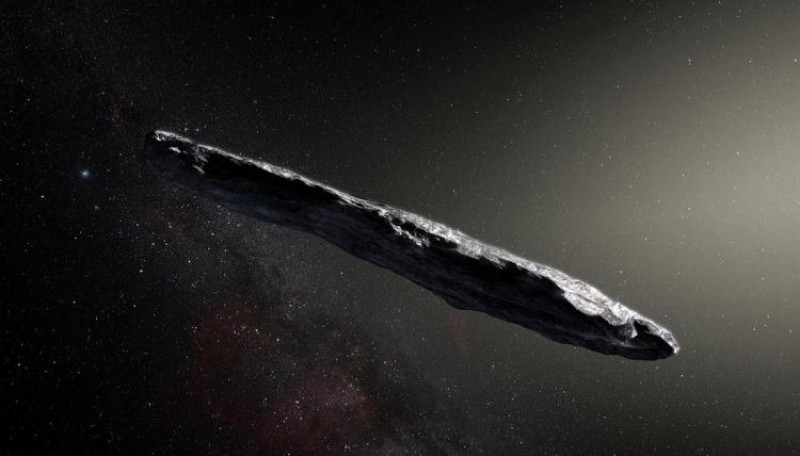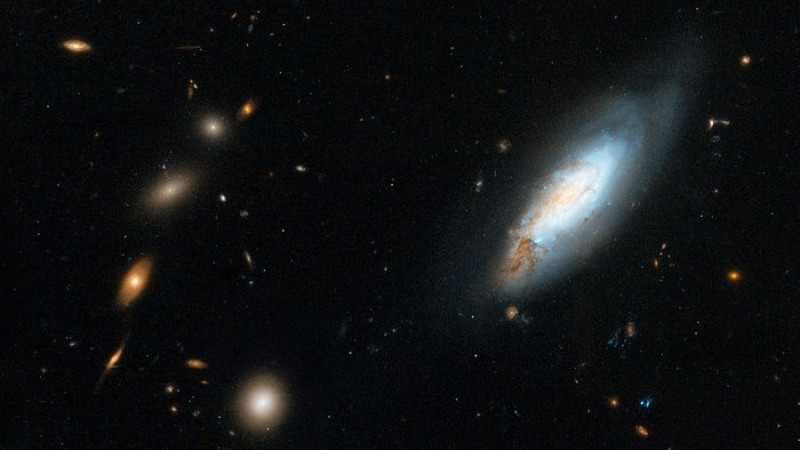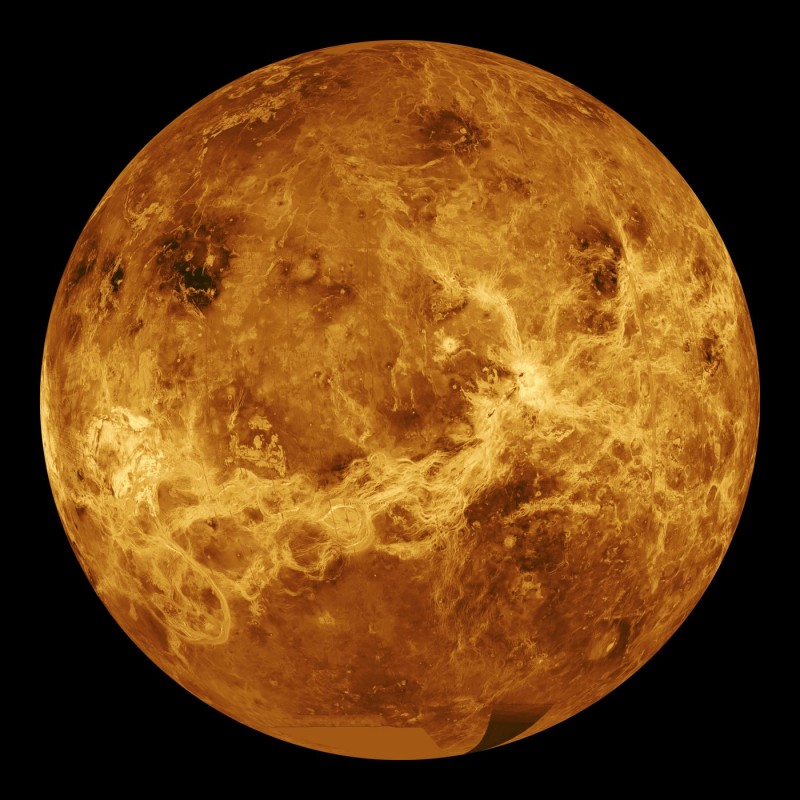Blog
Take Slooh's 'Supermoon Challenge' This Week
Wednesday, November 29th 2017 06:09 PM
If you've got plans to celebrate this weekend's supermoon, the astronomy broadcasting service Slooh would like to hear about them.
Slooh is soliciting your ideas for its "Supermoon Challenge," an interactive event that will complement its online coverage of the supermoon this Sunday (Dec. 3) at Slooh.com.
"So, what are you doing this supermoon?" Slooh representatives wrote in a statement. "Send your video, written thoughts, audio recordings, show or tell us how you are capturing the moon magic with #supermoonchallenge on Twitter and Facebook, and/or email us at [email protected]."
The "supermoon" of Nov. 13, 2016, seen from the campus of the University of California, Los Angeles.
Credit: Mélanie Barboni
Slooh's supermoon show, featuring live telescope views of Earth's nearest neighbor, will air Sunday at 9 p.m. EST (0200 GMT on Monday, Dec. 4). You can watch it at www.slooh.com or here at Space.com, courtesy of Slooh,...
Read More
Read More
Have the Imaginary Concepts of Dark Matter and Dark Energy Finally Run Their Course?
Tuesday, November 28th 2017 05:22 PM
In the last few decades, cosmologists have converged on a description of the birth and development of our Universe that is very successful at explaining what we have discovered using telescopes and scientific probes. But the description is not yet complete. To explain decades of astrophysical observations, it posits two mysterious new components: Dark Matter and Dark Energy, which are thought to comprise 96 percent of the combined total of mass and energy in the Universe. However now, a University of Geneva researcher has shown that the accelerating expansion of the universe and the movement of the stars in the galaxies can be explained without drawing on the concepts of Dark Matter and Dark Energy... And that these two imaginary entities may not actually exist. (Image Credit: NASA)
A University of Geneva researcher has recently shown that the accelerating expansion of the Universe and the movement of the stars in galaxies can be explained without drawing on the concepts...
Read More
Read More
Lightning Bolts Are Churning Out Antimatter All Over Planet Earth
Monday, November 27th 2017 11:18 PM
Particles split in the hot belly of a lightning bolt. Radioactive particles decay in the afterglow. Gamma rays rain down to Earth.
Teruaki Enoto, a physicist at Kyoto University in Japan, proved for the first time, in a paper published Nov. 23, that lightning bolts work as natural particle accelerators. Enoto and his co-authors' results confirm for the first time speculation dating back to 1925 about this phenomenon. Back then, scientists suggested that energized, radioactive particles might zip through the booms and flashes of a thunderstorm. Those particles emit energy at precise wavelengths, which Enoto and colleagues are the first to detect. [Electric Earth: Stunning Images of Lightning]
Here's what that means:
When lighting strikes, electrons shoot screamingly fast between clouds and Earth's surface (or between two clouds). But the particles don't travel through empty space. Along the way, they crash again and again into atmospheri...
Read More
Read More
Mars Has a Tangled Magnetic Tail
Monday, November 27th 2017 08:44 PM
Mars' complex magnetic field environment is detailed in this artist's illustration. "Yellow lines represent magnetic field lines from the Sun carried by the solar wind, blue lines represent Martian surface magnetic fields, white sparks are reconnection activity, and red lines are reconnected magnetic fields that link the surface to space via the Martian magnetotail," NASA officials said.
Credit: Anil Rao/Univ. of Colorado/MAVEN/NASA GSFC
Mars' magnetic field stands apart in the solar system because it gets twisted by interactions with solar particles, a NASA spacecraft discovered. What's more, the Red Planet also could have lost its atmosphere through the same process.
Mars today has a thin carbon dioxide atmosphere, and the pressure on the surface is too low for water to flow. But the planet's environment was different in the ancient past: Rovers and spacecraft have seen extensive evidence of rivers, ancient stream beds and possible oceans.
While researchers are st...
Read More
Read More
Berkeley astronomers selected to take new space telescope for a spin
Wednesday, November 22nd 2017 05:42 PM
“The diversity of science represented by these 13 teams is amazing,” said Daniel Weisz, an assistant professor of astronomy and leader of one of the teams. “We are definitely excited about this opportunity.”
The teams are hoping for new discoveries, but they’ve also been selected because of promises to provide baseline information for future observers and computer software tools that those astronomers will need to make sense of their observations on the telescope.
“With the telescope’s five-year lifetime, we need to use it very efficiently to maximize the return,” Weisz said. “The early release science program is supposed to produce science-enabling results within five months of the observations, which in the astronomy world is basically yesterday.”
Letting astronomers rather than staff take the telescope for a test drive is a new concept for NASA, said Imke de Pater, a UC Berkeley professor of astronomy...
Read More
Read More
A Mars Mystery: How Did Land Form Without Much Water?
Wednesday, November 22nd 2017 05:37 PM
The surface of Mars, with its dune flows, gullies and slope movements, is the result of sediment being transported downwards in the recent past as well as today. But this "mass wasting," typically caused by flows of water – for example, how the gullies on Earth are shaped – has proved a mystery to planetary scientists. This is because it is assumed that huge amounts of water are needed to form these features.
The problem is, there is a lack of enough water on Mars now and in the planet's recent past. In a new study published in Nature Communications, we simulated the atmospheric conditions on Mars to discover how these features could have come about without a big flow of water.
For example, scientists have made assumptions about the water budget necessary to form the so-called "recurring slope lineae" – dark streaks at the surface which appear annually (687 days) during peak temperatures and which dissolve in colder months at the martian surfac...
Read More
Read More
Wow! 1st Interstellar Asteroid Is a Spinning Space Cigar
Tuesday, November 21st 2017 05:27 PM
When astronomers using the Pan-STARRS1 telescope in Hawaii spotted a mysterious object dashing through our solar system on Oct. 19, they immediately knew it was something special.
This artist’s illustration shows the first interstellar asteroid, ‘Oumuamua. This unique object was discovered on Oct. 19, 2017 by the Pan-STARRS 1 telescope in Hawaii. Subsequent observations from ESO’s Very Large Telescope in Chile and other observatories around the world show that ‘Oumuamua seems to be a dark red highly elongated metallic or rocky object, about 1,300 feet (400 meters) long, and is unlike anything normally found in the solar system.
Credit: M. Kornmesser/ESO
Traveling at high speed and originating from interstellar space, this object was originally thought to be an ancient comet, but observations revealed it was, in fact, an asteroid from another star system.
For decades we’ve theorized that such interstellar...
Read More
Read More
Physicists Describe New Dark Matter Detection Strategy
Monday, November 20th 2017 07:11 PM
Coma Galaxy Cluster - The Swiss astronomer Fritz Zwicky first used the term "dark matter" in the 1930s. He studied the Coma Galaxy Cluster and specifically, how fast it revolves. Clusters are like merry-go-rounds. Their speed of revolution depends on the weight and position of the objects in the clusters, like the weight of the objects and their positions on a merry-go-round. The speed he measured implied the cluster had much more mass than the observable light suggested. In the 1970s, US astronomer Vera Rubin and her colleagues confirmed this result by studying galaxy rotation. They also discovered single galaxies, not just clusters, have more mass than their observable light suggested. The work of Rubin and her team helped to firmly establish the notion of dark matter. (Image Credit: NASA, ESA, the Hubble Heritage Team - STScI/AURA, D. Carter - Liverpool John Moores University, and the Coma HST ACS Treasury Team)
Though it has not yet been detected directly, ph...
Read More
Read More
Ready for cold weather observing?
Monday, November 20th 2017 05:37 PM
Winter in the Northern hemisphere is a great time for celestial observation. The nights start earlier and last longer. A bucket full of spectacular and interesting "winter" objects appear. Some of the most stable and clear skies occur in many places. Winter is arguably the best season to get out and use your telescope. However, there is a galactic sized "BUT" for many regions, especially high latitudes and elevations. It's cold, and in many cases dangerously cold.Not all regions are not affected by winter temperatures equally; our brothers and sisters to the south do face some "evening" cooling and "cold". However those terms are relative; let's say in southern Arizona, a hooded sweatshirt and light pair of gloves may suffice through most winter evenings. However in southern NH (where I am), a hoodie and light gloves won't even cut it inside a warming hut. As for our friends in the Canadian provinces well let's say not many of us face clear skies at -20(f).The key to en...
Read More
Read More
Earthquakes on Venus Could Be Detected by an Atmospheric Balloon
Friday, November 17th 2017 08:37 PM
Venus's atmosphere is the heaviest of any planet in the solar system, roughly equivalent to deep-ocean pressure at a depth of 1 kilometer. The crushing weight and layers of sulfuric acid make it utterly inhospitable — but investigators could read the planet's atmospheric pressure from above to find earthquakes on the hellish surface.
A team at NASA's Jet Propulsion Laboratory proposes deploying a balloon in the upper reaches of Venus's atmosphere that would be equipped with a sensor to detect seismic activity.
"On Venus, the atmosphere has about 90 times the pressure as what you find on the surface of the Earth. It's almost like an ocean surrounding the solid crust," Siddharth Krishnamoorthy, a postdoctoral associate with NASA's Jet Propulsion Laboratory and a member of the team working on the Venus mission, told Seeker. He and his colleagues will present the proposal at the American Geophysical Union meeting in New Orleans on Thursday, Dec. 14.
Floating at 34 mile...
Read More
Read More
